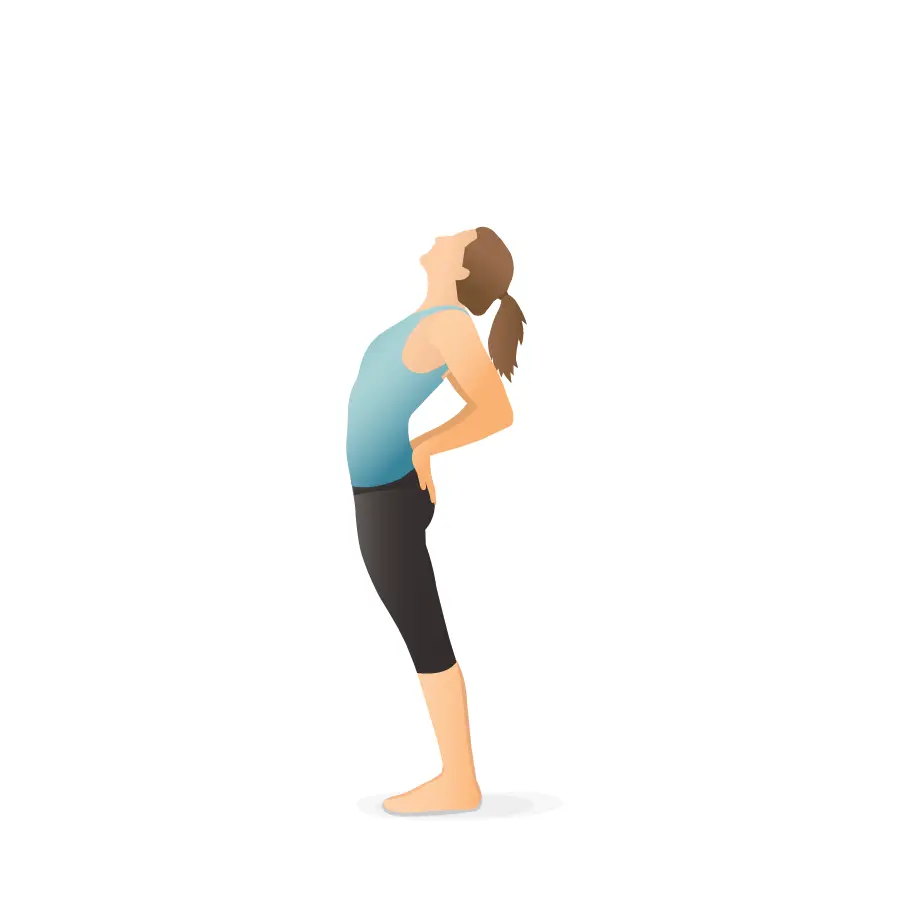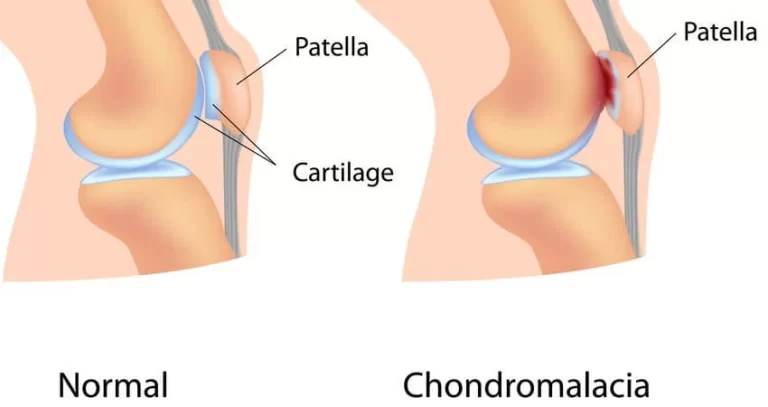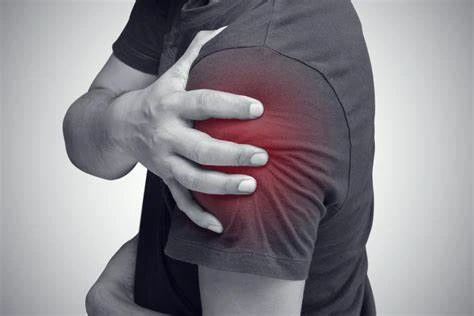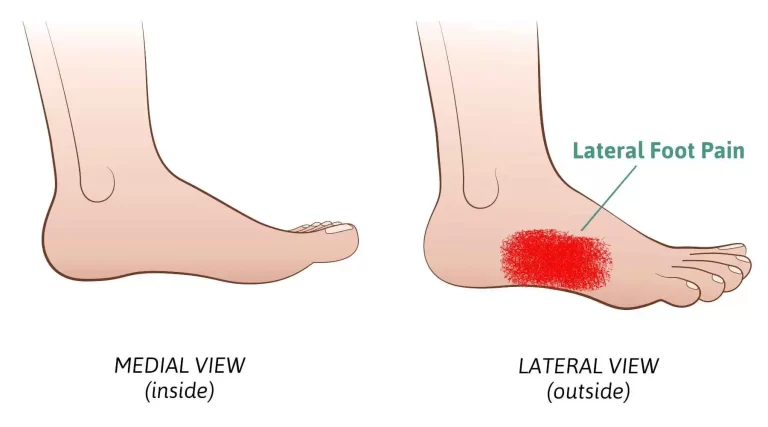Meralgia Paresthetica
Meralgia paresthetica is a medical condition that causes burning, tingling, and numbness in the outer thighs. The nerve that supplies feeling to the skin of the thigh is compressed, which is the reason behind it. Lateral femoral cutaneous nerve entrapment is another name for meralgia paresthetica.
Meralgia paresthetica has been connected to numerous diseases, such as obesity, pregnancy, and weight gain. Meralgia paresthetica, on the other hand, might be caused by an accident or condition, such as diabetes. Wearing looser clothing is one of the conservative techniques that can help reduce meralgia paresthetica. If those approaches don’t reduce the symptoms, medication may be used. Surgery is rarely required.
What is the Lateral Femoral Cutaneous Nerve?
The area known as the lumbar plexus is the network of neurons that connects the lower back’s spinal cord along with the legs and lower body’s motor and sensory neurons, It refers to the point where the cutaneous nerve of the lateral femur branches out. It gives the front and sides of the thigh a feeling. This neuron does not control any muscles; it is purely sensory.
The Lateral Femoral Cutaneous Nerve’s course
- The lateral femoral cutaneous nerve can be derived via the dorsal branches of the second and third lumbar ventral rami. This nerve extends diagonally across the iliacus muscle after entering from the lateral edge of the psoas major muscle. It continues to the anterior superior iliac spine after that. It supplies innervation to the iliac fossa’s parietal peritoneum along the route. The right nerve travels between the caecum in a posterolateral manner. The peritoneum and iliac fascia both serve to differentiate it away from the caecum.
- The inguinal ligament transports nerves from left to right through or behind it. Next to one another, they either go through or pass right next to the Sartorius muscle to enter the thigh from the anterior. They have been separated into two different types anterior and posterior.
- The nerve’s anterior branching can be visible just inches below the anterior superior iliac spine. This branch then innervates the skin on the front and outside sides of the thigh. This innervation also affects the knee. The cutaneous units from the anterior branch of the femoral nerve were joined to the saphenous nerve’s infrapatellar units. All of these branches subsequently bring together to create the peripatellar plexus.
- When compared to the anterior branch, the posterior branch breaks off from the fascia lata at a higher point. Then it splits off to supply innervation to the outer layer of skin. Via the greater trochanter, this innervation ascends to the middle of the thigh. The posterior branch may also provide sensation to the skin in the gluteal area.
What is Meralgia Paresthetica?
- Meralgia paresthetica is a disorder that produces burning, tingling, and numbness in the outer area of the thighs. The disorder is caused by compression of the lateral femoral cutaneous nerve (LFCN), which happens when you squash or apply pressure on it. This large nerve offers a feeling to the front and side of your thigh.
- Itching, tingling, or scorching pain has been described as “paresthetica,” and thigh discomfort has been defined as “meralgia.”Although the ailment may cause discomfort, there is no risk to your life or health.
Meralgia Paresthetica affects whom?
Anyone can get meralgia paresthetica, however, the following circumstances raise your chance of getting it:
- Diabetes, hypothyroidism, and/or alcohol use disorder.
- Have obesity or be overweight.
- Have lead poisoning.
- Are hurt in an automobile accident while wearing a seatbelt.
- Have been carrying a child.
- Had surgery recently in the area of your hips.
- Wear tight clothing, stockings, girdles, or a heavy-duty belt (like a tool belt).
- Have two different lengths of legs.
- Having scoliosis.
How frequent is Meralgia Paresthetica?
Although quite common, meralgia paresthetica is frequently misdiagnosed. According to research, it impacts three to four out of every 10,000 persons annually.
What causes the Meralgia Paresthetica?
The lateral femoral cutaneous nerves may have been compressed or pinched in disorders such as meralgia paresthetica. Sensory input gets transmitted through nerve endings on the skin that cover the outer thigh. The nerve does not affect your capacity to activate your leg muscles it just influences sensation.
For a great number of individuals, this nerve crosses painlessly from the groin to the upper thigh. While the lateral femoral cutaneous nerve experiences compression with meralgia paresthetica. The inguinal ligament frequently entraps the lateral femoral cutaneous nerve. This ligament joins the abdominal cavity to the upper thigh via the groin.
Any problem that raises pressure on the groin is a common cause of this compression, such as:
- Tight garments, including corsets, belts, and tight pants.
- An increase in weight or obesity.
- Wearing a heavy tool belt.
- Pregnancy.
- There has been a significant build-up of fluid in the abdominal cavity, which has elevated intraabdominal pressure.
- Near the inguinal ligament exists scar tissue from an injury or prior surgery.
- Meralgia paresthetica can also be caused by nerve damage. Nerve damage can result from diabetes, surgical trauma, or injuries sustained from a car seat after an accident.
What symptoms of Meralgia Paresthetica are present?
- On one side of the body, the front of the upper thigh is the only area where meralgia paresthetica symptoms occur. Among them are:
- Pain that could radiate to your knee’s outside side.
- tingling, burning, numbness, or discomfort in your thigh.
- Increased pain sensitivity ( for example touching your thigh lightly, can cause pain).
- Increased discomfort with extended standing or walking.
- Your muscles or mobility are not immediately impacted by meralgia paresthetica.
What are the risk factors for Meralgia Paresthetica?
The following factors may raise the risk of meralgia paresthetica.
- Excessive weight. Your lateral femoral cutaneous nerve may experience increased pressure if you are overweight or obese.
- Pregnancy. The lateral femoral cutaneous nerve is located in your groin and becomes increasingly stressed as your belly expands.
- Diabetes. Meralgia paresthetica may be the result of nerve damage caused by diabetes.
- Ages. The age group of 30 to 60 years old is more vulnerable.
What are the diagnoses for the Meralgia Paresthetica?
A physical examination and an evaluation of your medical history would enable the doctor who is treating you to confirm that you have meralgia paresthetica. A test can be necessary to determine how your thigh feels.
Additionally, your medical providers could ask you to pinpoint the numb or uncomfortable location on your thigh and explain the pain. Tests may also be performed to diagnose nerve root issues, neuropathy, or femoral nerve impairment.
They will undertake a practical test which is called the pelvic compression test in addition to an extensive physical examination. Strength and reflex tests are two more assessments that could be performed to help rule out other possible reasons for your symptoms.
- Pelvic Compression Test: Your doctor will apply pressure to your thigh during this exam to rule out other possible causes of your symptoms. Other simple touch and reflex tests might be conducted.
They’ll probably prescribe certain medical tests if they cannot identify the reason for meralgia paresthetica.To verify the following, they might order blood tests:
- Thyroid hormone levels for hypothyroidism symptoms.
- check your B vitamin levels for symptoms such as vitamin B12 or folate deficiencies, which can affect how well your nerves function.
- Lead levels for lead poisoning unpleasant symptoms
- Blood glucose levels to look for diabetes symptoms.
- Hematocrit or hemoglobin checking needs to be performed if you are screening for symptoms associated with anemia.
Your medical practitioner may also suggest:
- Imaging study: An X-ray will not reveal any abnormalities associated with meralgia paresthetica. However, to rule out other medical diseases as the source of your symptoms, x-rays of your hip and pelvic region may be useful. Your doctor may arrange a computed tomography(CT scan) or magnetic resonance imaging (MRI) if they believe that a tumor is the source of your symptoms.
- Electromyography: By analyzing and identifying abnormalities with the muscles and nerves, this kind of test examines the electrical discharges where the muscles release. An electrode, which looks like a tiny needle, monitors the electrical activity of the muscle. It could be necessary to perform this test to rule out other illnesses. To rule out additional health conditions, an examination might be necessary.
- Nerve conduction study: Your skin can be subjected to a tiny quantity of electrical electricity by stimulating the nerve with electrode patches. Nerve injury can be detected with the use of electrical impulses. The lateral femoral cutaneous nerves on both sides can be compared to one another. Using ultrasonography to your advantage is one technique to assist with the needle.
- Nerve block: Your meralgia paresthetica can be confirmed by an anesthetic injection that reduces pain at the site of your thigh’s lateral femoral cutaneous nerve entry. It is appropriate for directing the needle using ultrasonography.
How is Meralgia Paresthetica treated?
To treat meralgia paresthetica, the primary cause must be treated. A majority of cases are resolved with conservative measures.
Conservative Treatment
Among the conservative actions are:
- Wearing looser clothing is one example of a conservative action.
- Losing extra weight.
- Consuming over-the-counter painkillers. These could include ibuprofen (Advil, Motrin IB, etc.), aspirin, or acetaminophen (Tylenol, etc.).
- Physical therapy helps prevent hip issues and improves the muscles in the legs and buttocks.
Medication
If conservative measures fail to relieve your discomfort or if your symptoms last longer than two months, you might think about the following treatments:
- Injections of corticosteroids. Temporary relief from discomfort and inflammation reduction that is feasible with injections. Typical adverse effects include skin lightening near the injection site, discomfort, inflammation of the joints, and damage to the nerves.
- Tricyclic antidepressants. These medications may help you feel better. The adverse effects consist of impaired sexual function, dry mouth, insomnia, and constipation.
- Anti-seizure medications. Pregabalin (Lyrica), phenytoin (Dilantin, Phenytek), or gabapentin (Gralise, Neurontin).Pain relief may be achieved with these anti-seizure medications. Dry mouth, sleepiness, constipation, and decreased sexual function are all examples of the side effects.
Surgery
In rare cases, surgical decompressing of the nerve can be an option. Only those with severe and persistent symptoms should consider this route of treatment.
Physical Therapy for the Meralgia Paresthetica
The symptoms of meralgia parasthetica may be lessened with stretching and strengthening activities that assist the release of the compressed nerve. The exercises listed below may be able to reduce your problems.
Psoas muscle stretch when standing

The psoas muscle moves from the lower back towards the upper leg, traveling across the pelvis in its course. The purpose of this exercise is to lift the upper leg while simultaneously flexing the hip joint. To complete this task:
- Stretch your legs shoulder-width apart after taking a step backward about two meters from a wall.
- Position each of your palms on a vertical surface at shoulder height. You can also place your hands on your hips if that makes you more comfortable.
- Lunge the pelvis in the direction of the sidewall as quickly as you experience stretching at the front of the hip. Keep your elbows fully extended if you are keeping in touch with the wall; if you have to support your hips, keep them flexed.
- As you maintain this posture, take ten long, steady breaths.
- At the very least, make sure to work out twice a day.
Clamshell Exercise

This workout strengthens the hip stabilizers.
- For the initial step of the exercise, take a left-side stance, position both feet together, and curve your knees 45 degrees in the direction of your hips.
- Expand your right side knee gradually. Return to your beginning posture by bending your knee after maintaining the stance for a brief period.
- Change sides once you’ve completed 15 repetitions of the workout.
- Create a target of finishing this at least once every day.
- A person might wrap a resistance band around their thighs to add exercise intensity.
Lunges

Lunges are an effective way to strengthen and stretch key leg muscles, such as the gluteal, hamstring, and quadriceps, which are found at the front, rear, and side of the thighs, making up the buttocks. Lunges additionally help in enhancing balance. When performing a lunge more intensely, a person may choose to grasp a weight with each hand. To engage in a lunge:
- Maintain a straight posture while placing your hands on either side.
- With the right leg, take a large step forward and place both hands on your hips. Keep both arms straight against the sides if you are holding weights.
- While you drop, your right shin may be upright, but the right side of your thigh must remain parallel to the floor. Verify that the right knee does not extend over the toes of the right foot. There should always be a noticeable toe peak.
- Repeat the exercise on the other leg after 15 repetitions.
- Do three sets of lunges on each side once or twice a day.
Other exercises
Thirty minutes of physical activity three or four times a week should help reduce the pain associated with meralgia paresthetica. Some exercises to try are:
- Brisk walking
- Low-impact exercises
- Water aerobics
- Swimming
- Cycling outside or on a stationary cycle
What is the prognosis for meralgia paresthetica?
- In cases of paresthetic meralgia, the prognosis is usually good. With conservative therapy, over 85% of individuals with meralgia paresthetica recover.
- Patients who have undergone surgery or suffered a direct nerve injury usually recover in three months.
- Conditions related to pregnancy usually get better once the baby is born.
What occurs if the meralgia paresthetica is left untreated?
Meralgia paresthetica may worsen discomfort, induce numbness, or produce burning sensations if treatment is not received. It could be difficult for you to walk or move as you usually do because of these negative effects.
What are the prevention for Meralgia Paresthetica?
- One cannot avoid meralgia paresthetica. To reduce the probability of getting it, do the following:
- keeping yourself at a healthy weight.
- wearing clothes loosely.
- Steer clear of belts and girdles, especially tool belts.
Summary
Thigh pain and feelings of burning, numbness, stabbing, and aching are caused by a physical illness known as meralgia paresthetica. Meralgia paresthetica might have uncomfortable and unpleasant symptoms, but it is not harmful to your health. See a medical professional if the illness is affecting your quality of life. They can determine the root of the issue and offer treatments.
FAQs
How should meralgia paresthetica be treated?
Treatment for Meralgia Paresthetica
Physical therapy reduces hip injuries and strengthens muscles in the legs and buttocks.
Putting on less constricting apparel.
Controlling weight loss.
Injection of corticosteroids to decrease swelling.
Is paresthetic meralgia a serious condition?
Your front and side thighs receive your sensation from this big nerve. “Thigh pain” is commonly known as “meralgia,” whereas “burning pain, tingling, or itching” is described as “paresthetica.” The condition can be uncomfortable, but there is no chance that you will die from it.
How should someone with meralgia paresthetica sleep?
The most practical technique is to insert a pillow between your legs and sleep on the side that pains. (If your left thigh is burning, sleep on your right side.) This may lessen the nerve’s compression to the point where you can fall asleep.
Does meralgia paresthetica worsen with sitting?
Long periods of sitting or standing are thought to be risk factors for Meralgia Paresthetica, even though brief periods of sitting may not cause symptoms.
Which workout is ideal for those with meralgia paresthetica?
Lunges are regarded to be the most effective exercise for meralgia paresthetica. It is a multi-joint workout that improves lower-body muscular tone and strength. The quadriceps, hamstrings, and gluteal muscles are the main leg muscles that are stretched during this exercise.
Is meralgia paresthetica able to recover by itself?
A condition like meralgia paraesthetica is difficult to self-diagnose because, even though the condition can heal itself, if you just “hope” that the trapped nerve will somehow release itself, it won’t go away; instead, the condition will just persist until the pressure on the nerve is unintentionally applied.
How can I get rid of the burning feeling?
Anti-inflammatory medicines including prescription or over-the-counter painkillers are capable of helping you control the burning pain. A doctor can also advise you on certain at-home treatments that might be able to help with your illness.
References
- The lateral femoral cutaneous nerve. (2023, November 2). Kenhub. https://www.kenhub.com/en/library/anatomy/lateral-femoral-cutaneous-nerve
- Meralgia paresthetica: Symptoms and causes: Mayo Clinic. (2024, January 26). Mayo Clinic. https://www.mayoclinic.org/diseases-conditions/meralgia-paresthetica/symptoms-causes/syc-20355635
- Professional, C. C. M. (n.d.). Meralgia Paresthetica. Cleveland Clinic. https://my.clevelandclinic.org/health/diseases/17959-meralgia-paresthetica
- Mayo Clinic: Meralgia paresthetica: Symptoms and Causes. (2024, January 26). https://www.mayoclinic.org/diseases-conditions/meralgia-paresthetica/diagnosis-treatment/drc-20355639
- Meralgia Paresthetica. (2020, March 27). Johns Hopkins Medicine. https://www.hopkinsmedicine.org/health/conditions-and-diseases/meralgia-paresthetica
- Barrell, A. (2020, December 23). Which activities are most effective for treating meralgia paresthetica? https://www.medicalnewstoday.com/articles/meralgia-paresthetica-exercises#summary
- OrthoInfo – AAOS – Burning Thigh Pain (Meralgia Paresthetica). https://orthoinfo.aaos.org/en/diseases–conditions/burning-thigh-pain-meralgia-paresthetica/







